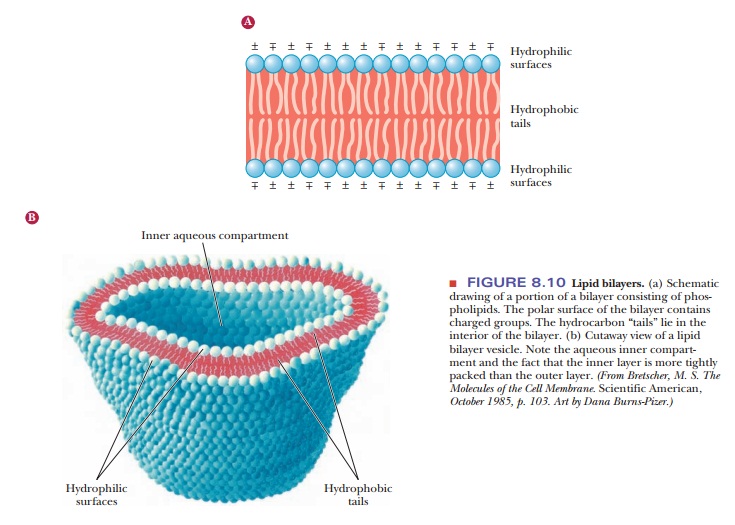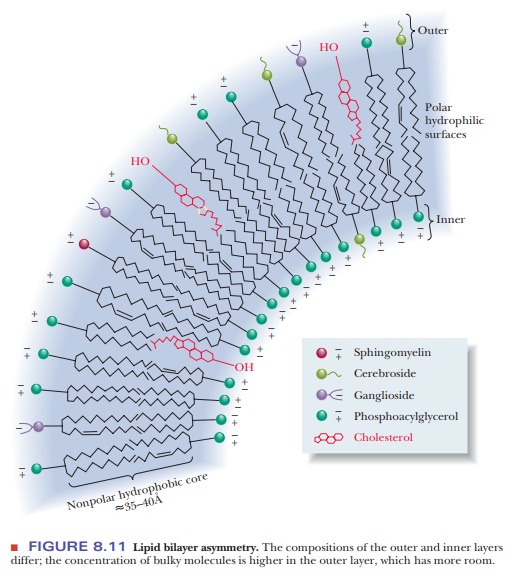Chapter: Biochemistry: Lipids and Proteins Are Associated in Biological Membranes
What is the structure of lipid bilayers?

What is the structure of lipid
bilayers?
Biological membranes contain, in addition to phosphoglycerides, glycolipids as part of the lipid component. Steroids are present in eukaryotes-cholesterol in animal membranes and similar compounds, called phytosterols, in plants. In the lipid bilayer part of the membrane (Figure 8.10), the polar head groups are in contact with water, and the nonpolar tails lie in the interior of the membrane. The whole bilayer arrangement is held together by noncovalent interactions, such as van der Waals and hydrophobic interactions. The surface of the bilayer is polar and contains charged groups. The nonpolar hydrocarbon interior of the bilayer consists of the saturated and unsaturated chains of fatty acids and the fused-ring system of cholesterol.

Both the
inner and outer layers of the bilayer contain mixtures of lipids, but their
compositions differ and can be used to distinguish the inner and outer layers
from each other (Figure 8.11). Bulkier molecules tend to occur in the outer
layer, and smaller molecules tend to occur in the inner layer.

Related Topics